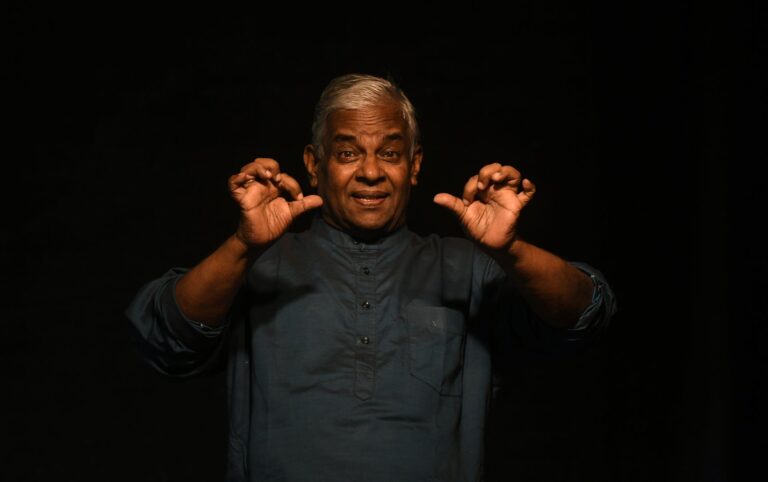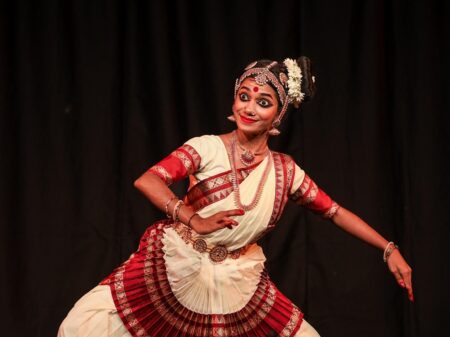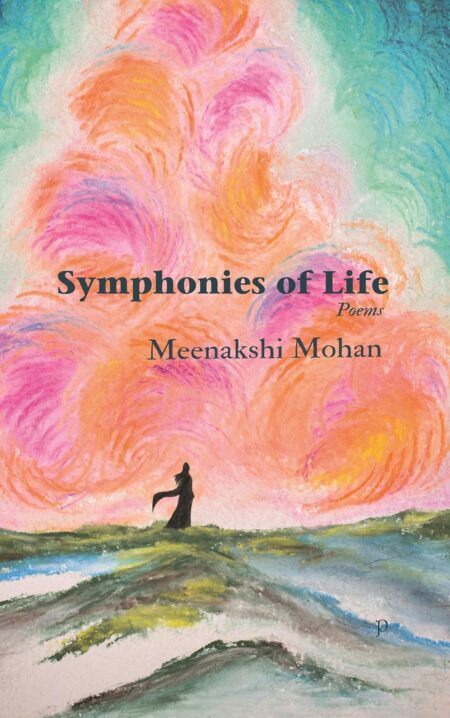The recently released book ‘Mudra’ by G Venu is a seminal work that documents notations for 1341 hand gestures of Kudiyattam, Kathakali and Mohiniyattam.
The preservation of choreography through notation systems has wide-ranging applications. Hungarian dance theorist Rudolf Von Laban developed a dance notation system, Labanotation, which is widely used in western dance. However, not many people have explored notating Indian dance as capturing movement through notations in Indian classical dance and theatre is not an easy task due to its intricacies. This is where Kudiyattam exponent G Venu comes in. He has created a system of notation for Indian dance and classical theatre, ‘Venotation’, which he presents in his latest book, “Mudra.”
The 756-page book is a compendium that includes the notation of 1341 hand gestures. It has 28 chapters that are divided into three major sections: Kudiyattam, Kathakali, and Mohiniyattam. Western classical art forms notate every nuance of their art form, but in Indian dances, equal importance is given to all the constituent parts and subparts from the head to the foot. The different parts of the body have different movements, and the notation system of the West and their symbols are not sufficient to document the Indian dance forms.
An alphabet for dance language
Initiated into Kathakali at the age of 11, Venu trained under the great masters, including Guru Gopinath. As his training in Kathakali progressed, his interest in the depiction of mudras deepened. The dream of notating mudras particularly Kathakali mudras sprouted in Venu’s mind during his prime youth as Kathakali dancer. He realized the need to document this sign language and that is how he started formulating a system of alphabets for the basic gestures and a system of notation for the varied hasta mudras.

Author: G Venu
Publisher: Natanakairali
Pages: 756
Price: Rs. 3000
Publishing date: March 2023
“Mudra” is not just a compilation of hand gesture notation, but it looks at gestures as an alphabet for the language of performance. Thus it is a one-of-a-kind book that notates not only the entire hasta, its direction, how it is connected with the body and the face, and how it is fixed within a given space. Venu’s system also uses the alphabet to practice the grammar of the performance across a number of art forms.

A masterpiece
The book describes extensively on Koodiyattam, Ramayana Samksepam, the Attaprakaram or acting manual for narrating the story of Ramayana through hand gestures in which all important mudras of Kudiyattam are included. The words of the text are arranged along with mudras in their exact sequence. All the acting techniques and methods are, in fact, evolved as storytelling. The book includes both the Attaprakaram and the notation of 260 mudras used in Kudiyattam.
The Kathakali part begins with the origin of the theatre form, Abhinaya, Aharya, make-up of Kathakali and hand gestures, then moves on to the notation of 24 mudras, 300 vinayogas, and 1000 variations. It also has extensive illustrations of make-up and roles. There is also a chapter on Ilakiyattam, storytelling through gestures without song accompaniment.
The final section, co-authored by Mohiniyattam exponent Nirmala Paniker, Venu’s wife, focuses on Mohiniyattam, its history, the mudras which are derived from three texts, Hastalakshna Deepika, Abhinaya Darpanam, and Balaramabharatham. It also delves into how they are used in Mohiniyattam. The book also contains the notation of one Cholkettu and six Padams.
The book is a groundbreaking contribution to the field of Indian classical dance and theatre. Venu’s system of notation provides a vocabulary for abhinaya and can be used to practice the grammar of the performance across a number of art forms. The book that is dedicated to the prolific writer and polymath Abhinavagupta also explores the use of mudras in ritualistic practice and dance.
“Mudra” is an essential resource for scholars, practitioners, performers, students and enthusiasts of Indian classical dance and theatre.




